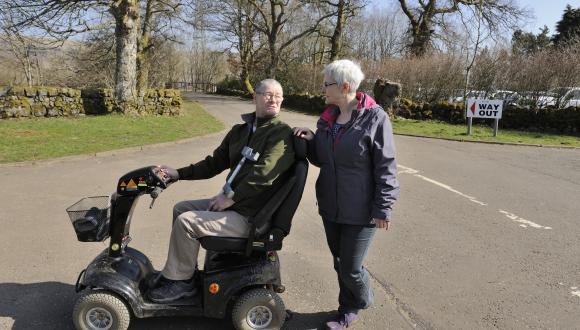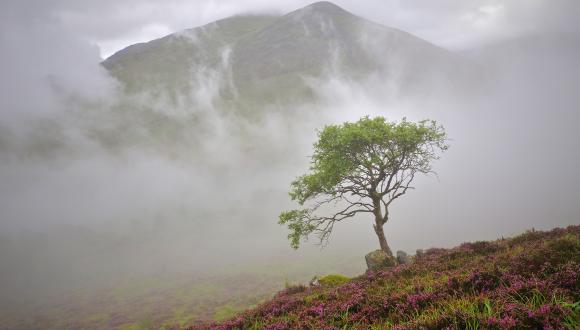NatureScot Equality and Mainstreaming Report 2025
Published: April 2025
Introduction
About NatureScot
We are Scotland’s nature agency, working to protect and restore nature. Our aim is to encourage and inspire everyone in Scotland to value our natural world.
We’re the lead public body responsible for advising Scottish Ministers on all matters relating to Scotland’s wildlife and landscapes.
About this report
We publish the Equality and Mainstreaming Report every two years and we review our equality outcomes every four years. The next full review of our equality outcomes is due in 2027.
There are two parts to the report. The first part highlights some of the work we’ve done to make sure equality is central to our day-to-day work. The second part of the report shows our progress against our current equality outcomes.
Foreword by Nick Halfhide, Interim CEO
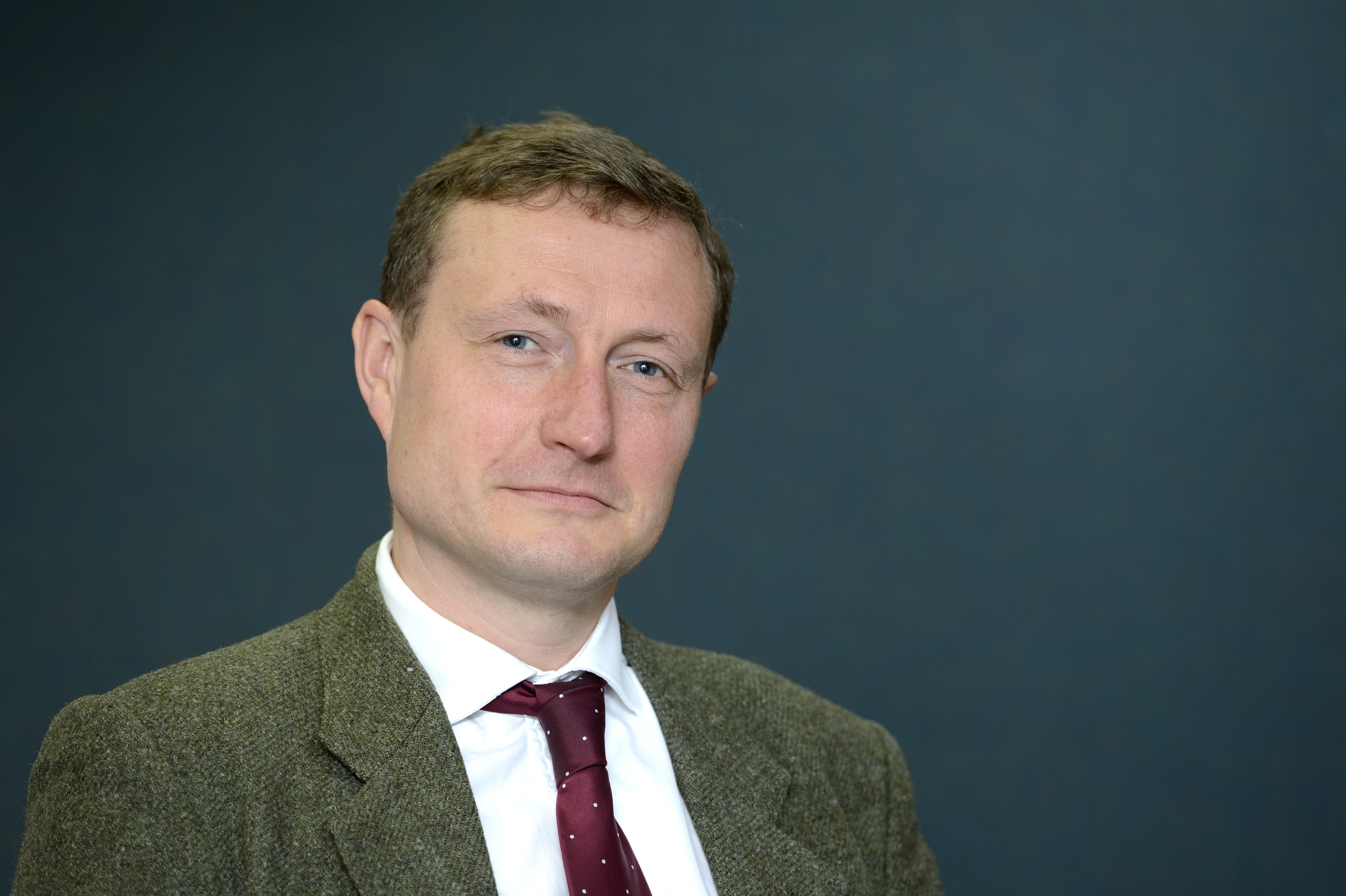
NatureScot’s ambition and purpose is a nature-rich future for Scotland. No single organisation can do this. We can only truly succeed if people of every background, age and ability can be part of a shared endeavour to protect, restore and value nature. That’s why the work detailed in this, our seventh Equality and Mainstreaming Report, is a crucial part of the work we do.
Our ongoing commitment to building a more diverse, equitable and inclusive workplace is fundamental to the quality, impact and relevance of the work we do, and for the wellbeing of NatureScot’s people. We want this commitment to develop a ‘ripple effect’ so as many people as practically possible can better access and understand nature, care for it, and enjoy all its benefits.
There is still significant work for us to do. The environmental sector is one of the least ethnically diverse in the UK. To address this, we have been working with organisations such as the Council of Ethnic Minority Voluntary Sector Organisations Scotland (CEMVO) to promote nature-based careers to people from ethnic minority backgrounds. We also committed to the Wildlife and Countryside Link Ethnic Diversity Route Map. This is our pledge to do what we can to increase the ethnic diversity of not only our workforce, but the entire environmental sector.
Since the publication of our previous Equality Report in 2023, we have made significant progress towards our equality outcomes. Key achievements include the work of our National Nature Reserves teams, in collaboration with Branching Out, Pony Axe S, and others to improve accessibility for visitors with physical disabilities. Our sites across Scotland have welcomed groups of all ages and abilities.
In 2024, more colleagues than ever disclosed their equality data, giving us a better insight into the makeup of our workforce. The data shows where we need to focus our efforts to become a truly diverse NatureScot.
We have also continued to make good progress in ensuring that NatureScot is seen as an employer of choice, where everyone has the same opportunities. Most of our vacancies are advertised with the possibility of job-sharing or part-time working. In addition, a large percentage of our jobs are suitable for hybrid or remote working. A recent staff survey showed that 96% of our colleagues feel that hybrid working supports their work-life balance. It is particularly reassuring that 98% of colleagues say they feel trusted to do their job effectively regardless of where they work. The flexibility of hybrid working continues to remove barriers for people who live in remote areas or are unable to travel due to illness or disability, or caring responsibilities.
It has also contributed to a falling gender pay gap of 7.3%; a 0.2% reduction since April 2023.
Data that measures our progress is of course an important part of this report but so, too is taking the opportunity to celebrate all that’s been achieved by NatureScot’s people this far. We still have a long way to go, especially in terms of our workforce diversity. We continue to build on our commitment year on year, gathering data, reviewing our policies, listening to others, challenging ourselves, and most importantly, challenge inequalities. We are working in partnership with a wide range of people and organisations to reach our ultimate goal of a nature-rich future for all, where everyone stands to benefit, and no-one is left behind.
Ro-ràdh le Nick Halfhide, Àrd-Oifigear Eadar-Amail
’S e amas is adhbhar NàdarAlba gum bi beartas nàdair aig Alba san àm ri teachd. Cha dèan aon bhuidheann seo leis fhèin. Cha soirbhich leinn ach ma ghabhas a h-uile duine, ge be cò às a thàinig iad, dè an aois a tha iad no dè na comasan aca, pàirt ann an co-iomairt airson nàdar a dhìon, a leigheas agus spèis a thoirt dha. ’S e sin an t-adhbhar a tha an obair san aithisg seo, an t-seachdamh tè againn air co-ionnannachd is prìomh-shruthadh, na pàirt ro-chudromach dhen obair a nì sinn.
Tha sinn an sìor-dhealas do dh’àite-obrach a chruthachadh a bhios nas iomadaiche, cothromaiche agus ion-ghabhalaiche agus sin bun-stèidh càileachd, buaidh is buntainneas na h-obrach a nì sinn agus do shunnd muinntir NàdarAlba. Tha sinn airson ’s gum bi buaidh is ath-bhuaidh aig an dealas seo ach am bi cothrom aig an àireamh as motha de dhaoine ’s a ghabhas cothrom is tuigse nas fheàrr fhaighinn air nàdar agus tlachd a ghabhail sna buannachdan a thig na lùib.
Tha obair mhòr romhainn fhathast. Tha roinn na h-àrainneachd am measg nan roinnean aig a bheil an iomadachd as lugha a thaobh chinnidhean san Rìoghachd Aonaichte. Airson aghaidh a chur air seo, tha sinn air a bhith ag obair còmhla ri buidhnean mar Comhairle Buidhnean Roinn Shaor-thoileach nam Mion-shluaghan Cinnidheach ann an Alba (CEMVO) airson dreuchdan nàdair a bhrosnachadh do dhaoine o mhion-shluaghan cinnidheach. Tha sinn cuideachd an dealas dhan Mhapa Iomadachd Chinnidheach aig Ceangal na Dùthcha ’s na Fiadh-bheatha. Leis a sin, thug sinn geall ar dìcheall a dhèanamh airson an iomadachd chinnidheach a chur am meud, chan ann am measg ar luchd-obrach a-mhàin ach ann an roinn na h-àrainneachd air fad.
On a chaidh an aithisg roimhe seo air co-ionannachd fhoillseachadh ann an 2023, tha sinn air adhartas nach beag a dhèanamh a dh’ionnsaigh co-ionannachd. Am measg nam prìomh adhartasan a rinn sinn tha obair sgiobannan nan Tèarmann Nàdair Nàiseanta againn a thug piseach, ann an co-obrachadh le Branching Out, Pony Axe S is feadhainn eile, air so-ruigsinneachd làraichean do dh’aoighean air a bheil ciorraman fiosaigeach. Chuir na làraichean againn air feadh na h-Alba fàilte air mòran dhaoine de gach aois is comas.
Ann an 2024, dh’fhoillsich barrachd de ar co-obraichean againn an dàta co-ionannachd aca na a-riamh roimhe, a’ toirt dhuinn dealbh nas fheàrr air nàdar ar luchd-obrach. Tha an dàta seo a’ sealltainn dhuinn dè na rudan a tha feumach air leasachadh airson ’s gum bi NàdarAlba fìor iomadach.
Rinn sinn deagh adhartas cuideachd ann a bhith a’ dèanamh cinnteach gu bheilear a’ coimhead air NàdarAlba mar rogha nam fastaichean, far a bheil na h-aon chothroman aig a h-uile duine. Ann an sanasachd nan dreuchdan bàna againn tha e ag innse gun gabh mòran dhiubh a dhèanamh mar obair phàirt-ùine no mar dhreuchd roinnte. A bharrachd air sin, gabhaidh mòran dhe na dreuchdan againn a dhèanamh bhon taigh no gun a bhith san oifis fhèin gach latha. Ann an suirbhidh a rinn sinn am measg ar luchd-obrach o chionn ghoirid, thuirt 96% dhe na co-obraichean againn gu bheil cothromachadh eadar obair is beatha nas fheàrr aca is iad a’ dèanamh obair eadar an oifis is an taigh. Tha e air leth misneachail dhuinne gun tuirt 98% dhe na co-obraichean againn gu bheil iad a’ faireachdainn gu bheil earbsa againn annta an obair aca a dhèanamh gu math ge be càit a bheil iad ga dèanamh. Leis an t-sùbailteachd a thig an cois dòighean-obrach mar seo, tha e a’ sìor fhàs nas fhasa do dhaoine a tha a’ fuireach ann an àitichean iomallach no nach urrainn dhaibh siubhal an cois tinneis, ciorraim no uallaichean cùraim.
Ri linn, chrìon beàrn an tuarastail a thaobh gnè 7.3%; 0.2% nas lugha na sa Ghiblean 2023.
Tha an dàta a thomhaiseas ar n-adhartas na phàirt chudromach dhen aithisg seo gun teagamh ach bu chòir dhuinn an t-adhartas a rinn muinntir NàdarAlba gu ruige seo a chomharrachadh cuideachd. Tha slighe fhada romhainn fhathast, gu sònraichte a thaobh iomadachd ar luchd-obrach. Tha sinn a’ sìor thogail air ar dealas bliadhna air bhliadhna, a’ cruinneachadh dàta, a’ dèanamh lèirmheas air na poileasaidhean againn, ag èisteachd do chàch, a’ toirt dùbhlan dhuinn fhìn agus os cionn gach rud eile, a’ cur aghaidh air neo-ionnannachd. Tha sinn ag obair ann an com-pàirteachas le raon farsaing de dhaoine ’s buidhnean air an t-slighe gu teachd-shaoghal anns a bheil beartas nàdair is anns am faigh a h-uile duine buannachd, gun duine sam bith air dheireadh.
Part One: Mainstreaming
Mainstreaming the equality duty means making sure we consider equality issues in everything we do, including our decision making. The first part of this report highlights some of the work we’ve done to make sure equality is central to our day-to-day work.
The Public Sector Equality Duty is a duty on public authorities, such as NatureScot, to consider how our policies or decisions affect people with protected characteristics. Protected characteristics are traits that the Equality Act 2010 protects from discrimination. They include age, disability, gender identity, pregnancy, race, religion, sex, and sexual orientation.
There are two parts to the Public Sector Equality Duty: the general duty and the specific duties.
The general duty asks us to consider how we can:
- remove unlawful discrimination
- advance equality of opportunity
- foster good relations
The specific duties help us achieve the general duties. For example, by listing the data we need to report on.
This report gives an overview of our work and explains what we have done to meet the general duties listed above.
Leadership and governance
Our Chief Executive has overall strategic responsibility for equality, diversity and inclusion (EDI). We have an equality champion on our board and two champions within our Senior Leadership Team. This ensures that there is leadership oversight to our commitments in relation to EDI, ensuring this is visible and embedded into everything we do, from the planning stage to the delivery of all our activities.
Our equality champions lead by example and set the pace for our EDI ambitions.
They actively contribute to the work of the networks outlined below, and oversee the progress made against our equality outcomes.
We report quarterly to our board on our workforce profile. The information we report on includes the protected characteristics of our leavers, sick absence trends, and participation rates for staff surveys. It helps us to track progress in these areas and the relevant equality outcomes.
This year we’re creating a steering group to oversee our equalities work. This new group will be responsible for governance, setting direction and supporting the delivery of the actions that contribute to achieving our equality outcomes, and the development of future outcomes.
Employee networks
We currently have six colleague-led networks. They provide peer support, advice and information to employees. They all play a role in raising awareness and ensuring inclusion is embedded into everything we do.
We welcomed a new ‘Age Positive’ network in 2024. The network gives employees of 50 years old and over a collective voice. It currently has around 60 members and encourages colleagues of any age to get involved in discussions, events, and wellbeing campaigns.
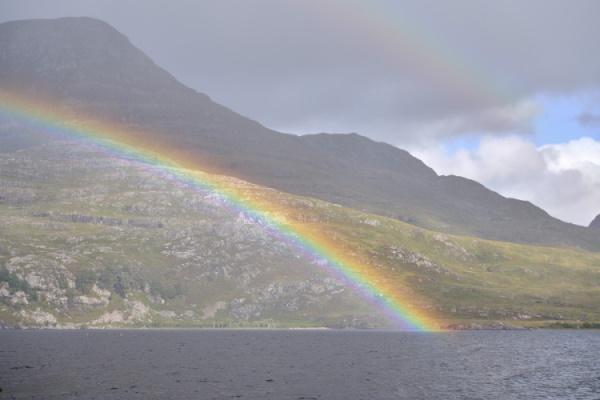
Our other employee networks are the:
- Young Employee Network
- LGBTQ+ Network
- Disability, Ability, Wellbeing and Neurodiversity Network (DAWNN)
- Women’s Network
- Multicultural Network
Our employee networks were instrumental in the success of this year’s campaign to encourage greater disclosure of employee’s equality information. With their support and encouragement, 59% of our employees completed the survey.
Delivering our services
Many of our services are delivered online. This way of delivering services isn’t always the preferred option for customers with protected characteristics such as older people and disabled adults. We also know that good internet access can be a problem for households in more deprived areas.
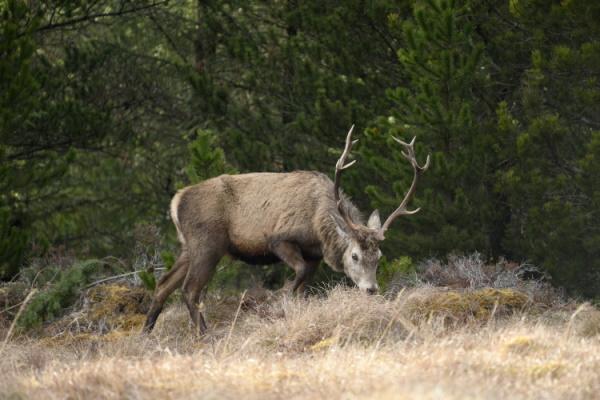
To make sure our digital services are accessible to everyone, we brought together an Accessibility Project Board. The team work in collaboration with others in the organisation to ensure that our digital services, such as our website and deer management service, are designed and delivered in a way that meets the needs of everyone.
Our digital services also have to meet level AA of the Web Content Accessibility Guidelines, known as WCAG 2.2, as a minimum. These are the gold standard, used worldwide to ensure digital spaces are accessible. We publish Accessibility Statements on our digital services to let users know how accessible a site is and what we are doing to fix any issues.
Outdoor access
We continue to promote outdoor access, and work with partners to remove the barriers that prevent access for some groups. Colleagues working on our National Nature Reserves host events that are accessible to people of all ages and abilities. Details of the work we have done can be found in this report under Equality Outcome 1.
Supporting our employees
We are committed to supporting the wellbeing and development of our workforce.
Our Employee Assistance Programme offers confidential counselling and wellbeing support to colleagues, their partners and their children. The service also offers access to wellbeing content relating to mental health, fitness and nutrition.
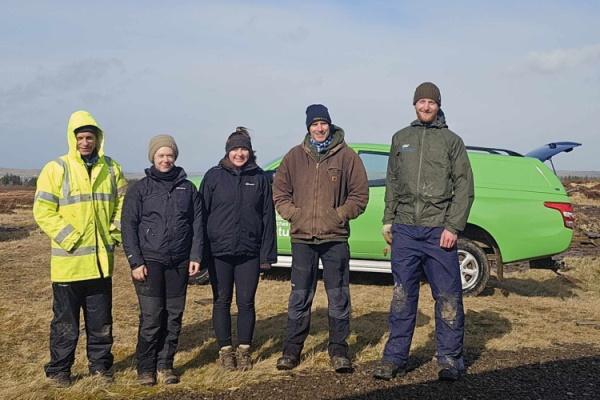
Since 2023, all colleagues have access to Read&Write accessibility software, a literacy support tool that helps with everyday tasks like reading text out loud, understanding unfamiliar words and proof-reading written work. By making this available to everyone, we’ve removed the need to have individual applications approved and reduced the stigma around using accessibility software. Since doing this, we’ve seen an increase in the number of users by around 500%.
We have an in-house team of 18 accredited Career Conversation facilitators, and we’ve rolled out career conversation workshops to line managers to help them have conversations with people in their teams about their careers. In addition, Career Compass workshops for non-managers are taking place throughout 2025 to empower everyone to take an active role in their development and career.
We signed a commitment to the Wildlife and Countryside Link Route Map towards greater ethnic diversity in 2024. The route map is an action plan to increase the ethnic diversity of our workforce and support colleagues by setting out the key actions we need to take. We’re currently working on year one of the plan, reviewing our processes for reporting racism and providing new training opportunities and guidance for colleagues.
Case Study: Mainstreaming the equality duty into our recruitment processes.
We continue to build inclusion into our recruitment policies and processes.
Since the conclusion of a pilot scheme in which we shared interview questions with candidates ahead of their interview, the practice has been embedded into the interview process for all vacancies.
Feedback from candidates has shown how effective this has been in supporting those who are neurodivergent as well as making the interview process less stressful for everyone.
“I felt better prepared for the interview - it made the interview process more relaxed and more like an interesting discussion surrounding each question.”
“I was able to practice my answers which greatly helped my confidence.”
We advertise our vacancies on “Equal Jobs”, CEMVO’s job site and “Evenbreak”, a job board that targets disabled candidates. Our job site features the Disability Confident logo and the Living Wage badge to show our commitment to EDI in the recruitment process.
Procurement
We have a procurement process that incorporates equality into our standard terms and conditions for awarding contracts to businesses. When buying goods and services, everyone is expected to consider equalities in their requirements and evaluation criteria. This may include support for small and medium sized businesses as well as wider equality considerations such as fair working practices and the real living wage.
Businesses submitting tenders must agree to commit to Fair Work First, Scottish Government’s policy for driving high quality and fair work across Scotland’s labour market.
Equality Impact Assessments
We carry out Equality Impact Assessments (EqIAs) to assess the impact of new and revised policies, strategies, activities and services prior to starting the work and before we make decisions. Our employee networks are fundamental in this process and they championed the launch of a new accessibility checklist for events and meetings to support the EqIA process.
The checklist builds on the initial equality impact assessment by ensuring that EDI is considered at every stage of an event or large meeting.
Nature Reserve Advisers are now working on a variation of the checklist which will be used for running outdoor events with members of the public.
We carry out bespoke surveys to make sure the evidence we use in our EqIAs, as well as other areas of our work, is up to date.
We’ll conduct a review of our EqIA process and an audit of existing assessments at the start of the next reporting period.
Working with others
Case study: Mainstreaming the equality duty into our work with others
The Species on the Edge programme is a partnership between NatureScot and seven nature conservation charities, dedicated to improving the fortunes of 37 priority species found along Scotland's coast and islands. The programme has a strong focus on equality, diversity and inclusion and this is key to the work the partnership does.
The partnership has a youth panel of 16 to 25 year olds who design and lead their own local environmental projects, as well as raising awareness. They inspire young people to make a change in their communities and to connect with nature, the environmental sector and each other. The panel worked with the University of the Highlands and Islands to support projects with undergraduate students as well as four trainee placements.
The partnership also worked with communities to identify barriers to participation, and is actively delivering a programme of workshops, and volunteering and training opportunities to overcome these barriers. Recent activities included a “well-walk”, accessible for wheelchairs and pushchairs and at a walking pace that accommodated all abilities.
In addition, they’re supporting groups through residential centres across the East Coast, local development trusts in Shetland and Orkney and community centres in the Solway. They work with adults with severe learning difficulties, including those who are nonverbal.
Over the next two years the Species on the Edge programme will continue to deliver accessible activities that encourage everyone to connect with nature.
Working with Trade Unions
We have worked in Partnership with our Trade Union colleagues to review our Partnership Agreement to embed the Fair Work Principles within the Agreement. We also continue to work in partnership to further enhance NatureScot being an inclusive employer.
In 2024, Trade Union colleagues worked with us to review our consultation process. Their members told us how we could improve the way we communicate our plans and how we might engage better with those affected by change. As a result, we updated our approach, and we now have a consultation process that meets our employees’ needs and expectations.
Part Two: Progress towards our outcomes
We are on track to achieve each of our equality outcomes over the next two years.
We’ve made some minor changes to the outcomes and actions to keep them relevant to the work we’re doing. We have also reworded any that are not clear or contain dated terminology.
| Equality outcome | Outcome description | Status |
|---|---|---|
| Outcome 1 | Through our work to inspire everyone to value the natural world, people who are under-represented as a result of their protected characteristics are better able to access and positively connect with nature. | On track |
| Outcome 2 | Greater diversity in those working to protect and restore nature. | On track |
| Outcome 3 | More young people from ethnic minority groups, and disadvantaged communities, have a greater role in nature-based governance and decision-making. | On track |
| Outcome 4 | Enable a more inclusive culture in NatureScot that reflects wider society. | On track |
| Outcome 5 | Support better gender balance across all grades in NatureScot, particularly women in senior leadership roles. | On track |
Outcome 1 – Through our work to inspire everyone to value the natural world, people who are under-represented as a result of their protected characteristics are better able to access and positively connect with nature.
Actions to achieve the outcome:
1.1 Develop a longer-term outreach programme for National Nature Reserves (NNRs) to increase visits to these places from target groups using co-production approaches.
We have been able to attract more visitors from target groups to our National Nature Reserves (NNRs), however we have not made progress on our outreach programme due to a lack of capacity in our teams.
The NNR at St Cyrus hosted several Branching Out visits for adults who use mental health services in Scotland. We also worked with Pony Axe S to take wheelchair users on to the beach at St Cyrus, so they could enjoy this wonderful part of the nature reserve. Our beach wheelchairs here have also been extremely popular. At Tentsmuir NNR we improved a popular path to make it accessible for more users.
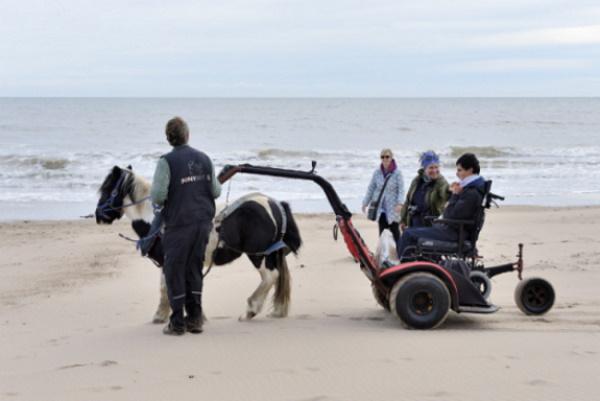
Colleagues from Tentsmuir also supported Fife Council by participating in several Family Fun days. They collaborated with the Royal Society for the Protection of Birds (RSPB) to deliver an open day about sea eagles for Ukrainian refugees. They also led a guided walk in partnership with Dundee Carers. Creag Meagaidh NNR hosted Shinty Memories, a group which supports people with depression and dementia.
Our nature reserves have also supported a wide range of outdoor learning opportunities from nursery to tertiary level education. These included homeschool and uniformed groups as well as individuals, some of whom were on work experience or working towards a John Muir or Duke of Edinburgh Award. Beinn Eighe, Muir of Dinnet, Noss, Knockan Crag and Creag Meagaidh NNRs have all hosted a number of Junior Ranger visits, supporting young people to learn about nature, the outdoors and pathways into nature-based jobs and skills. Between 2023 and 2025 we supported over 4,000 young people with their learning at our NNRs.
We have contributed to a range of initiatives supporting communities in areas low in the Scottish Index of Multiple Deprivation, for example community activities at Blawhorn Moss NNR. At the Flanders Moss NNR we hosted Camphill, who support young people with learning difficulties, and Walk in the Park, who support older, less able-bodied people. At Caerlaverock NNR we hosted volunteer activity for Massive Outpouring of Love, a charity that works with asylum seekers. Here we also worked on a tree planting project with Better Lives Partnership, a local group in Galloway, who support people with learning difficulties.
We don’t carry out any monitoring of visitor numbers to our reserves, with only estimates of their use. As a result, it is difficult to say if there’s been an increase in numbers from priority groups. However, the range of activities highlighted above demonstrate the actions we’re taking to encourage greater use of our reserves. We’ll continue this as part of our wider work to inspire more people to connect with nature.
We aim to begin working on our outreach programme in 2025.
Status: On track
1.2 Develop future campaign activity using co-production approaches with key audiences, including target groups.
Our Make Space for Nature campaign included a focus on reaching ethnic minority groups. For example through “The Hillwalking Hijabi”, Zahrah Mamood and her social channels. Zahrah uses her social media channels to encourage other Muslim women to go outdoors and enjoy the benefits it can bring to physical and mental health. We also worked with two new (to us) influencers: “Tales By Josh” (Scottish Black Adventurers) and “Simply Emma”, one of the UK's leading disability bloggers. The Make Space for Nature campaign saw a successful focus on young people, families with children, those aged 18-44, those aged 55+, people suffering from ill health and those from lower socio-economic groups.
By working with appropriate influencers who authentically represent and resonate with our target audiences, and selecting suitable media platforms, the campaign will inspire these communities to connect with, protect, and benefit from nature.
Through our work with influencers, media agencies, and partners, we’ll continue to focus on reaching less engaged audiences, including people from ethnic minority communities, disabled people, and those facing socio-economic challenges.
Status: On track
1.3 Ensure our biodiversity, National Nature Reserve and Scottish Outdoor Access Code (SOAC) campaigns and communications reach, and are relevant, to target groups.
In September 2023 we promoted the Scottish Biodiversity Strategy consultation to under-represented groups through organisations such as YoungScot and Youthlink Scotland, CEMVO, the 2050 Climate Group and the Children and Young People’s Commissioner Scotland to encourage wider participation. As a result, all groups sent in responses. We held workshops in conjunction with YoungScot and colleagues involved in this work presented at the CEMVO AGM in Glasgow.
For our Scottish Outdoor Access Code campaign, our social media agency targeted ethnic minority groups and lower socio-economic groups. In 2024 the agency ran a campaign on Instagram and Facebook to reach ethnic minority adults. The agency reported that 15% of those reached by the 2024 campaign were in the targeted group.
Revised action for 2025-2027: 1.3 Campaigns and communications relating to Outcome 1 are reaching, and being evaluated by the impact on the relevant target groups.
Status: On track
1.4 Ensure evaluation of our project, campaign and communication activity includes consideration of protected characteristic groups.
As the activities described under the previous actions show how we have planned, delivered and evaluated campaigns with protected characteristics groups in mind, we will merge actions 1.3 and 1.4.
Status: Closed
1.5 Undertake bespoke survey work to ensure we have the evidence we need to inform our work.
Our survey results strongly guide our work as we continue to focus on promoting the value and benefits of visiting the outdoors and taking action for nature.
For our Scotland’s People and Nature Survey 2023/24, data was collected between April 2023 and March 2024, which gave us a representative sample of the adult population in Scotland. The findings show that frequent use of local greenspace was highest among: those who have the easiest access and are most satisfied with their local provision; younger people; people with good health; more affluent people; and dog owners. The findings also show that 71% of residents in the least deprived neighbourhoods enjoyed outdoor recreation at least once a week, compared to 50% in the most deprived communities. The results of the survey question about barriers to accessing the outdoors will be released in 2025. Once we’ve received this, we’ll be able to look at ways to resolve the issues.
In 2023 we published the results of the NatureScot Opinion Survey 2022. The survey covered a range of topics about our corporate identity, the public’s awareness and understanding of the work we do, and attitudes to environmental issues. The following year, we published the Scottish Outdoor Access Code awareness survey 2021-23.
Status: Achieved
Outcome 2 - Greater diversity in those working to protect and restore nature.
Actions to achieve the outcome:
2.1 Ensure the revised Climate Emergency Skills Action Plan identifies specific actions to increase the number of minority ethnic people in the nature-based sector.
This action will not be progressed. We’ve closed this action because the Climate Emergency Skills Action Plan is under the control of another organisation and won’t be revised. Instead we will focus on improving the ethnic diversity of the nature-based sector in other ways. One example is through our commitment to the Wildlife and Countryside Link Ethnic Diversity Route Map. This work is also covered by action 2.2 below, which aims to engage with ethnic minority people through positive action and the promotion of nature-based jobs and career pathways.
Status: Closed
2.2 Work with CEMVO and Backbone to promote nature-based jobs and pathways in ways that make careers in the nature sector a more attractive option for ethnic minority people.
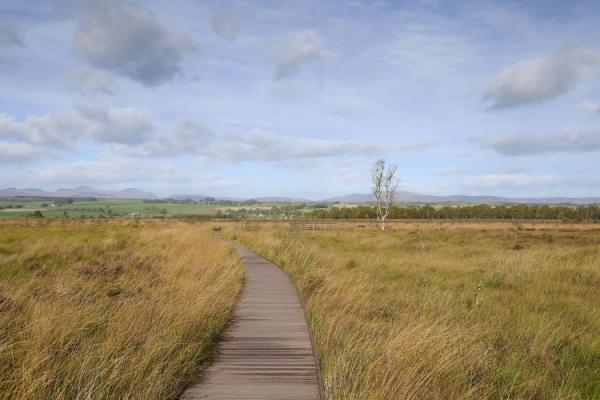
CEMVO Scotland has been one of our key partners during the period of this report. We co-designed and delivered a best practice session for our 2023 Green Skills Week conference. The talk on representation in the sector received positive feedback from attendees, who found points made about education and inclusive participation in nature-based opportunities to be “very poignant” and requiring “a lot of attention from the industry”. CEMVO have also supported the development of the Scottish Biodiversity Strategy consultation, the 2024 Future Routes Fund and our engagement with priority groups about a proposed national park in Galloway.
Backbone CIC has not been involved during the period of this report because of a change in their operational approach.
Although the action has been achieved, it is too soon to measure the impact of this work on the diversity of the environmental sector. We will monitor our candidates’ data, and the data from organisations in the sector who have committed to the ethnicity route map, to get this information in the future.
Status: Achieved
2.3 Include a requirement for projects that are looking to use volunteers to include proposals for an inclusive programme.
We have promoted the “Make Your Mark” inclusive volunteering campaign and toolkit to project managers internally and to other partners externally. Projects that used the toolkit included the Scottish Invasive Species Initiative and Saving Scotland’s Red Squirrels. Our funding to The Conservation Volunteers, Volunteering Matters and the John Muir Trust all had a strong focus on inclusion. As a result, in 2023, 438 of Volunteering Matters Action Earth volunteers had a disability (10% of the total number involved). Overall, this hasn’t changed since 2019 and we will have a clearer picture for this reporting period once we have received data for 2024.
The Conservation Volunteers delivered 88 sessions outdoors in nature with refugee groups. In the same year, the John Muir Trust piloted inclusive on-site volunteering activities and in 2024, 2,785 John Muir Awards were achieved by people from disadvantaged communities (27% of awards delivered). This is a similar number of awards to previous years.
Status: Achieved
2.4 Develop an approach to measuring and reporting on target groups in our projects.
Our External Funding team are currently developing a new grant management system which will make measuring and reporting on equalities information more accessible.
One of the many projects that received funding was the Growing Connections project. The project supported refugee women, traumatised by war, who did not feel safe in public spaces. Urban Roots used the European Regional Development Fund (ERDF) funding to organise regular female-safe activities in the Malls Mire Local Nature Reserve.
By focusing on the lower socio-economic areas of Scotland, these projects contribute to reducing the inequality gap between these and more affluent areas.
Status: On track
2.5 Co-design EDI best practice workshop with CEMVO for the Green Skills Week Conference.
This event was successfully delivered at the Green Skills Week Conference in 2023.
Status: Achieved
2.6 Identify and promote nature-based sector role models and their specific pathway to nature-based employment.
We have launched a number of films on our website and YouTube channel that cover routes into nature-based employment. One of the videos features Shalom Oynekan, a freshwater biologist from Nigeria. Shalom also helped us deliver a recent online careers event through 'Speakers for Schools' which was attended by more than 100 people.
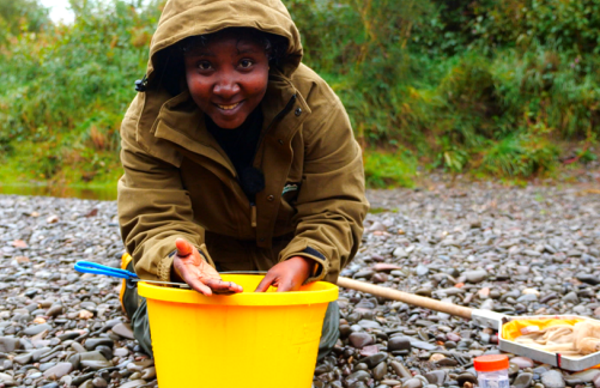
We worked closely with brand ambassadors and influencers from the Chartered Institute of Ecology and Environmental Management for a Meet The Professionals webinar as part of 2024 Green Careers Week. Ajay Tegala was one of the speakers.
In total, the videos have been watched over 3,360 times and will be promoted again in 2025.
We’re currently looking at ways to engage with other organisations’ social media ambassadors.
Status: On track
2.7 Recruit two to three young ME people and/or from disadvantaged communities into placements annually.
It has not been possible to meet this target each year but we have exceeded our minimum target over the two year period covered by this report.
We hosted a nature reserve trainee through the New to Nature placement programme. The programme was aimed at young people between 18 and 25 years old, who were disabled, from ethnic minority groups or low-income households. The trainee secured a permanent full-time job with us before the end of their 12-month placement.
We’ve also supported the recruitment of four placements across the Species on the Edge partnership, as outlined under the “Working with others” section of this report. These trainee placements are for a fixed 12-month period and are not dependent on experience or degree-level education. Because of this, and the inclusivity commitment statement in the job adverts, we can reach a diverse range of candidates.
We have updated this action to enable us to explore other ways of recruiting young people and people from disadvantaged communities. For example, by offering apprenticeship routes into NatureScot, and targeted recruitment for our permanent contract vacancies.
Revised action for 2025-2027: Recruit four young people from ethnic minority groups, or young people from disadvantaged communities, every two years.
Progress – On track
2.8 Celebrate our EDI achievements externally.
We have promoted a number of achievements and campaigns on our social media and podcast channels.
These have included:
- increasing diversity in wildlife management
- International Women’s Day
- International Day of Women in Science
- celebrating a new all-abilities boardwalk at Forvie
- Future Routes Fund for young people
- Women in palaeontology
- the use of all terrain wheelchairs at St Cyrus NNR
The Women in palaeontology podcast was extremely successful. The podcast was downloaded 254 times and the social media post achieved over 1,800 views.
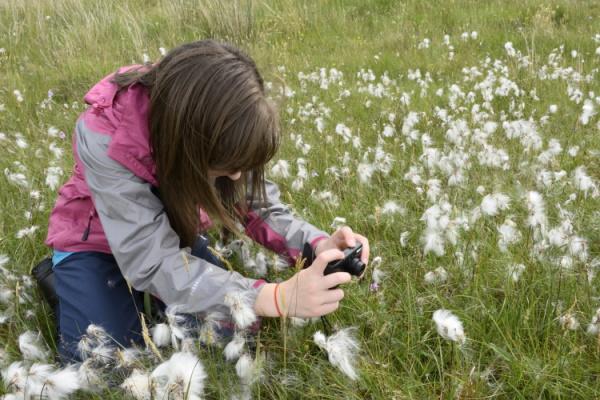
We have increased the number of social media posts and podcasts every year, from one social media post in 2022, to eight social media posts and three podcasts during the period of this report. We will continue to highlight EDI content whenever possible.
We have reviewed and updated this action to make our progress easier to measure.
Revised action for 2025-2027: 2.8 Promote four EDI-focused achievements or activities every year that generate audience engagement comparable to other general campaigns.
Status: On track
Outcome 3 – Increased participation and representation of young people from ME backgrounds and disadvantaged communities in governance and influence in nature-based decision making.
Revised outcome for 2025-2027: More young people from ethnic minority groups, and disadvantaged communities, have a greater role in nature-based governance and decision-making.
Actions to achieve the outcome:
3.1 Develop young person/ME board shadowing opportunity.
We recently joined a Boardroom Apprenticeship programme which gives a 12-month opportunity for learning and to gain experience of serving on a board. We welcomed a placement on to our board at the start of 2025, and we offered the opportunity of an external board placement to our employees.
The scheme is open to anyone over 18 years old who hasn’t held a board position and doesn’t have significant experience on a board. Because of this, there is an opportunity to increase the diversity of our board. While they won’t be a full board member, the person on the placement will attend meetings and we’ll ask for their input and perspective.
Revised action for 2025-2027: 3.1 Develop a board shadowing opportunity for young people and young people from ethnic minority groups.
Status: On track
3.2 Increase representation of target groups on our assessment panels, advisory boards and forums.
Four of our young employees make up our Young Employee Panel (YEP), which represents those aged 30 and under. The panel is actively involved in developing how we engage with, attract, and retain young people. They also influence the wider development of the organisation from the perspective of a young employee.
In the past, members of the panel attended board meetings. While this provided exposure to the board and the decision-making process, much of what was discussed was already well developed, leaving little opportunity for them to contribute or influence. To address this, the panel now attends board workshops. This means they have more influence over decision making at a much earlier stage of the process. For example, they have been able to take a more active role in our next Corporate Plan and Business Planning cycles.
Our Future Routes Fund is a fund for young people, run by young people. It puts them at the heart of decision making. Its panel, made up of eight young people aged between 11 and 26, is responsible for assessing the applications and making decisions on the allocation of the funds, with our support. In 2024 they awarded £20,000 to a range of environmental projects, with the aim of increasing young people’s engagement with nature.
We’ll continue to look at ways to increase representation of young people from ethnic minority groups and disadvantaged communities on our assessment panels, advisory boards and forums.
Status: On track
3.3 Review and widen our Stakeholder Engagement Strategy to include target groups and other under-represented groups.
We are developing our core list of stakeholders to include under-represented groups. A recent addition to the list is CEMVO who can help us to reach target groups and increase engagement. Progress has been slower than expected however we’re committed to widening our list of stakeholders and including other minority groups before we publish the 2027 equality report.
Status: On track
3.4 Measure participation in decision-making.
The Species on the Edge youth panel was set up to help coordinate the views of young people and their input to the project. They also collaborated with the University of the Highlands and Islands to support projects with undergraduate students and four trainee placements, as mentioned under action 2.7.
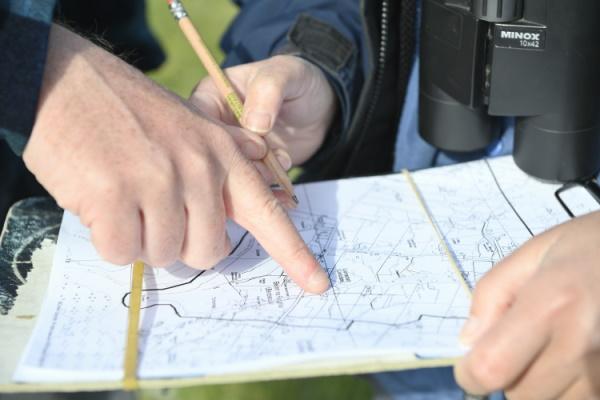
The Species on the Edge programme can measure the time commitment from the youth panel in supporting the project.
We believe this action, and how we measure participation in decision-making, needs to be reviewed before we can make real progress.
Revised action for 2025-2027: 3.4 Agree measures to show the target groups’ participation and contribution to decision-making.
Status: Not started
Outcome 4 – Enable a more inclusive culture in NatureScot that reflects wider society.
Actions to achieve the outcome:
4.1 All employees to set personal EDI objectives as part of their Personal Development Conversations (PDCs).
4.2 Introduce standard questions re: EDI in all candidate statements/interviews.
We have reviewed actions 4.1 and 4.2 and, following feedback from our Senior Leadership Team, have agreed these will not, as stand-alone actions, have the desired outcome of a more inclusive culture. As a result, we’re not taking these actions forward.
Our People and Organisational Development (P&OD) Advisors recently attended inclusive recruitment training. They’ll use this knowledge when advising recruiting managers to make sure that EDI is considered throughout our recruitment process. We’ll also build this in to the development of our people managers and it will apply to our staff performance management process when it is next reviewed.
Status: Closed
4.3 We have a co-ordinated employee network engagement plan and access to funds to support their activity.
We refreshed and relaunched our Inclusion and Wellbeing Calendar of events and campaigns in 2024. The calendar was agreed in collaboration with our employee networks, Senior Leadership Team equality champions, P&OD colleagues and Trade Unions. The calendar is supported by internal and external workshops, networking and awareness events, and online resources. Our ENEI membership (Employers Network for Equality & Inclusion) gives all employees access to equality and inclusion events such as workshops, round-table events and information hubs.
We allocate funds to support wellbeing and inclusion in the workplace, and the activities of our employee networks.
The Inclusion and Wellbeing calendar will be revised for 2025 to make sure we’re supporting campaigns that create positive conversations, increase awareness and improve understanding.
Status: On track
4.4 Enhance our EDI learning framework.
We have a suite of online learning and live courses which are available to all colleagues. Recent additions included climate anxiety and stress workshops, neurodiversity awareness workshops, and an inclusive recruitment skills workshop for vacancy managers and interview panel members. The inclusive recruitment skills workshop will ensure we’re offering a supportive and accommodating interview experience to neurodivergent candidates and those facing barriers during the recruitment process. This training was created in collaboration with our disability network.
Work to enhance our EDI learning will continue into 2025 with a programme of events that will adapt and respond to the needs of our workforce.
Status: On track
4.5 Identify where membership of professional bodies could add value to our EDI work and support delivery of our EDI objectives.
We worked closely with CEMVO to produce our Inclusive Language Guide which will be launched in 2025. They were able to advise on latest developments and best practice.
We also encourage individual membership of professional bodies. For example, some colleagues in our People & OD team hold The Chartered Institute of Personnel and Development (CIPD) memberships ranging from Associate to Chartered Fellow grade. Membership to CIPD gives us access to up to date EDI information such as changes to legislation, guides on good practice and research and analysis reports by CIPD and partner organisations.
Our corporate membership to ENEI, mentioned in the mainstreaming section of this report, gives our employees access to information and training on equality and inclusion topics, and support from a dedicated account manager and team.
Status: On track
Outcome 5 – Support better gender balance across all grades in NatureScot, particularly women in senior leadership roles.
Actions to achieve the outcome:
5.1 Development of Women into Leadership Programme.
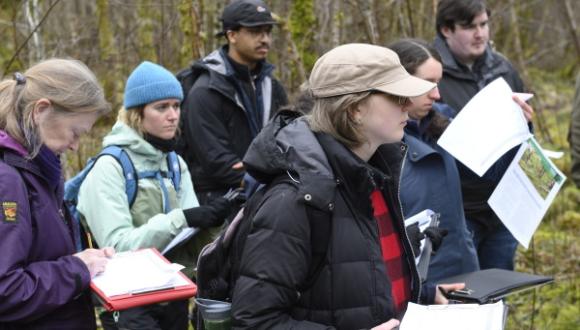
In 2024 a group of 20 colleagues attended the Women into Leadership virtual conference. After the conference, attendees were invited to a reflection session. Even though the event had some value, and feedback from attendees was positive overall, the impact was difficult to measure.
We do not have plans to develop a Women into Leadership programme. Instead we’ll support and encourage women to develop their careers through some of the activities mentioned under action 5.2.
Status: Closed
5.2 Positive action to encourage women to apply for senior roles.
Statistically women are more likely to be appointed to our F grade positions. Roles at this level are typically heads of departments, strategic resource managers and principal advisers. Over the past two years, we have advertised seven F grade vacancies. Our records show that 58% of the candidates were men. However, 57% of the successful candidates were women.
During 2024, the Women’s Network delivered a series of workshops to address issues such as self-confidence, as well as practical skills for writing supporting statements and CVs. The workshops, supported by a P&OD Adviser, were extremely popular and the network hopes to put on more events throughout 2025.
We’re rolling out Career Conversations to all colleagues at NatureScot. This will support good quality conversations between line managers and their teams about their aspirations. We hope this will help encourage women to apply for senior roles in the future.
Looking forward, we’ll continue to work with our Women’s Network to look at ways to encourage and support women to apply for leadership roles, such as raising awareness of inclusive recruitment practices to eliminate gender bias. We’ll also focus on developing people into leadership roles. Although this won’t be gender specific, it will be inclusive and accessible.
Status: On track
5.3 Include opportunities for job sharing in adverts.
We’ve revised our recruitment policy so that all vacancies are advertised as suitable for job-sharing, unless there’s a strong reason not to. Our recruitment approval process has recently been updated and we’ll use this as a way of measuring how many vacancies are offered as job-share, how many applicants we received and how many were successful.
Status: Achieved
Part Three: Gender Pay Gap and Equal Pay Statement
Gender pay gap reporting
The data shown in this section is correct on 31 January 2025.
The gender pay gap is the percentage difference between men’s and women’s average hourly pay excluding overtime. The mean is found by calculating the total of the values and dividing by how many values there are. The median is found by listing the values in order and finding the middle value.
On 31 January 2025, our mean gender pay gap was 7.3% including additional allowances in payment, but 7% excluding allowances, with a median of 0%. The 0.3% difference is due to additional payments being made in departments where the gender mix is predominantly male, and where external market factors are having an impact, or where additional responsibilities over and above normal duties are undertaken. These additional payments are attached to a job rather than the person in the job, meaning that regardless of gender, these payments would be made. We will continue to monitor and take action where required on this imbalance, and work with our networks to remove any real or perceived barriers to women entering these roles.
In 2023, we reported a mean gender pay gap of 7.5% with a median of 5%.
A new public sector specific duty, to report on the disability and ethnicity pay gaps, was introduced in 2025. We will report on these for the first time in our 2027 equality report.
Our statement on equal pay
We continue our commitment to promote and embed equality of opportunity and diversity within NatureScot. This extends to fair and equitable pay and reward for all colleagues.
We aim to ensure transparency and eliminate any bias in our pay and reward systems. This includes equality on the basis of sex, sexual orientation, gender identity, ethnicity, disability, religion or belief, age, marital and civil partnership status, pregnancy and maternity or any other relevant differences such as trade union activity or someone’s social background.
We operate a civil service recognised job evaluation scheme (JEGS). The JEGS process evaluates jobs within the organisation and not the person employed in that job. People working at the same grade or doing similar work, work rated as equivalent, or work of equal value are paid the same. This is irrespective of their gender, ethnicity, disability or any other difference. We believe that equal work deserves equal pay as a basic principle of equality.
We are committed to open and transparent pay practices. We publish salaries in our vacancies, and we have open communications with Trade Unions regarding pay and reward throughout the employment life cycle.
We have reduced our mean gender pay gap from 15.01% in 2017 to 7.3% on 31 January 2025. During our last pay negotiations (2023-2025) with Trade Unions and in line with Scottish Public Sector Pay Policy, we have focused more on our lower paid employees which is where the majority of our female workforce are. Moving forward, we will continue to utilise these pay negotiations, and engage with our employee networks, to identify and address any inequalities.
Our employee networks have been instrumental in highlighting barriers to progression and career development within NatureScot. We are committed to further reducing our gender pay gap and imbalances during 2025-2027. To support this, we will:
- Continue to work in partnership with Trade Unions and the Scottish Government to consider ways to reduce the gender pay gap within our pay remit,
- Continually improve our processes and procedures to ensure opportunities are transparent, open for all and that bias is removed from decision making,
- Continue to promote and facilitate workplace flexibility for everyone,
- Retain our Living Wage accreditation
- Work with the National Advisory Council on Women and Girls (NACWG) to support their aim to "make gender inequality a historical curiosity in Scotland". NatureScot has signed the public pledge in support of the work of NACWG.
This Equal Pay statement is owned by the NatureScot Interim Chief Executive, Nick Halfhide, and reviewed by the People and Organisational Development Team. It will be reviewed by April 2027.
Occupational segregation by gender
On 31 March 2025, 61.1% of our colleagues were women. The gender split of colleagues by grade is shown below in Chart 1, and again in Table 8.
We are still seeing more women in A to D grade roles. Roles at grades A and B tend to be generalist administration support jobs and entry level jobs.
We’re addressing this through the work we’re doing under Outcome 5 to support better gender balance across all grades.
There are two types of occupational segregation. The first, vertical segregation, is commonly known as the ‘glass ceiling’. This is where women and men work at different levels in the same field, with men in senior positions. The other type, horizontal segregation, is where women and men work in different types of jobs.
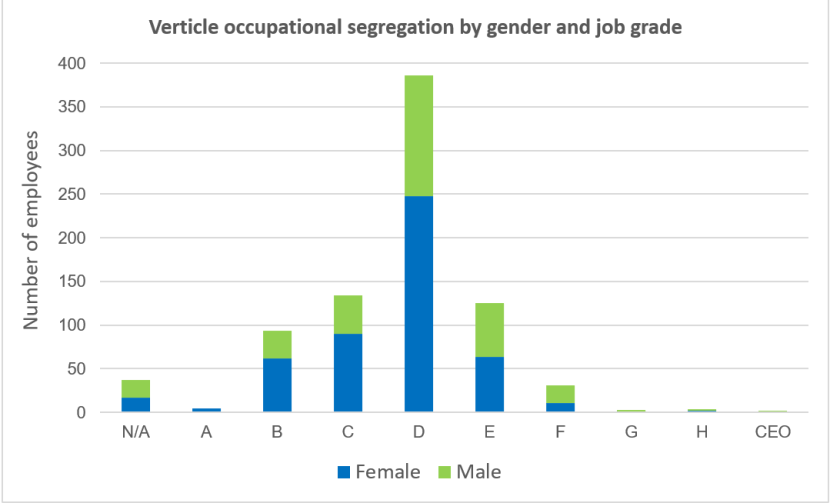
The chart shows 37 people without grades (N/A). These are field workers such as goose counters and bat workers, who do not fall into our standard grade structure.
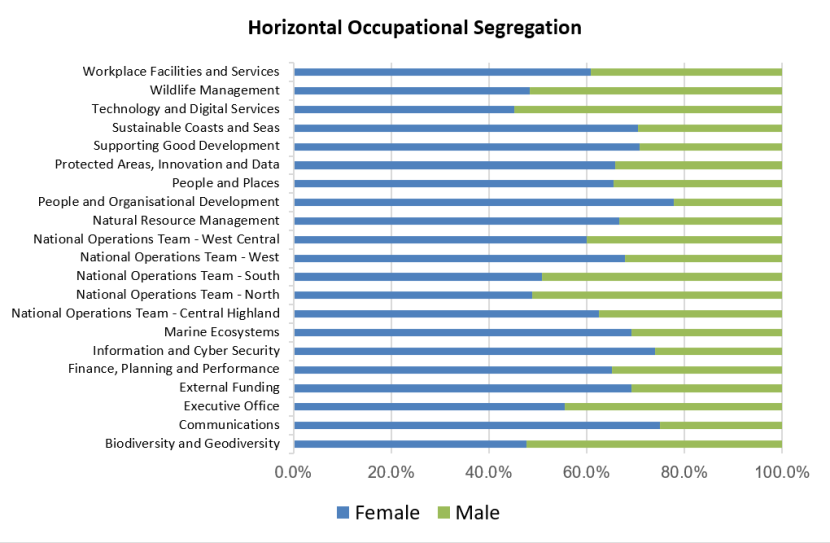
The horizontal occupational segregation highlights the teams that are predominately male, such as the Wildlife Management, Technology and Digital Services, National Operations North and Biodiversity and Geodiversity teams. This relates back to the 0.3% difference in the gender pay gap when additional allowances are paid in these predominantly male teams. Our STEM Ambassadors, Women’s Network, and the Young Employee Network are instrumental in removing barriers to women working in these areas.
In comparison, there are disproportionately more women in our Communications, External Funding, Information and Cyber Security, Marine Ecosystems, People and Organisational Development, Supporting Good Development, and Sustainable Coasts and Seas teams.
Our next Equality and Mainstreaming Report, due in 2027, will also show occupational segregation for ethnicity and disability.
Part Four: Employee data
Our employees’ data gives us a good understanding of our workforce. It allows us to identify trends and to develop effective equality goals. It also shows where we can do better and where our focus needs to be.
Our 2024 equality data questionnaire used sets of questions similar to those used in the last Scottish Census, based on the research and recommendations of the Office for National Statistics (ONS). By doing this, we can compare our results with the wider population.
469 employees completed the EDI questionnaire and of these, 305 were women.
The response rate of 59% was a great improvement on previous campaigns where we were achieving response rates of around 25%. It is also comparable to other organisations in Scotland as well as nationally.
Some of the employee data in this report is taken from questionnaire responses. Information about an employee’s gender and age is held in our Oracle HR system. For this reason, we have full data for our employees for these categories.
Due to the way we collect data from new employees and leavers, the disclosure rate is lower than we would like. This is shown in tables 10, 12, 14, and 16. We’ll look at ways to improve this for the next reporting period.
When we compare our data with Scotland’s Census 2022 results, we can see that the diversity of our workforce is low in most areas and does not represent the population of Scotland. With that in mind, we remain committed to mainstreaming equality and inclusion into the way we recruit and retain our workforce, and we’ll continue to work on the actions that contribute to the success of equality outcomes 3 to 5.
Ensuring anonymity
We have excluded some numbers less than five in the report tables to protect anonymity. These are marked with an asterisk (*). If a figure less than five could be calculated from the remaining numbers, and there is a risk to anonymity, it is omitted or the categories are combined.
Summary of NatureScot’s workforce
At the start of this reporting period on 1 April 2023, NatureScot had 768 employees.
By 31 March 2024, we had 807 employees. This had increased to 819 by 31 March 2025.
We ran 174 recruitment campaigns in 2023/24 (122 external) and 138 campaigns (89 external) in 2024/25.
Between 01 April 2023 and 31 March 2025 we welcomed 153 new colleagues.
During the same period, 159 colleagues left our employment.
Note: Percentages may not add up to 100% due to rounding adjustments. Where this has happened, the last percentage in the table has been adjusted to total 100%.
Age (Oracle HR system data)
The 45-54 age group continues to be the largest group of employees. This was one of the drivers behind the new ‘Age Positive’ employee network that was launched in 2024.
There are no significant changes to other age groups compared to the previous year. The headcount for young employees aged 16-24 remains low, which can be attributed to the lack of dedicated opportunities such as modern apprenticeships and project placements.
Our Young Employee Network members are aged 30 and below. The majority of this group are between 27 and 30 years old. Unless we take positive action to recruit more young people, the network will lose 20 members in the next 12 months. The actions under equality outcomes 3 to 5 will help us to rebuild network numbers.
| - | 31 March 2024 | 31 March 2024 | 31 March 2025 | 31 March 2025 | - |
|---|---|---|---|---|---|
| Age group | Employees | Percentage | Employees | Percentage | Difference |
| 16-24 | 11 | 1.4% | 8 | 1.0% | -0.4% |
| 25-34 | 144 | 17.8% | 156 | 19.0% | +1.2% |
| 35-44 | 173 | 21.4% | 171 | 20.9% | -0.5% |
| 45-54 | 237 | 29.4% | 236 | 28.8% | -0.6% |
| 55-59 | 139 | 17.2% | 135 | 16.5% | -0.7% |
| 60-64 | 72 | 8.9% | 83 | 10.1% | +1.2% |
| 65+ | 31 | 3.9% | 30 | 3.7% | -0.2% |
| TOTAL | 807 | - | 819 | - | - |
| - | New starts | New starts | Leavers | Leavers |
|---|---|---|---|---|
| Age group | Employees | Percentage of new starts | Employees | Percentage of leavers |
| 16-24 | 5 | 3.3% | 11 | 6.9% |
| 25-34 | 66 | 43.1% | 39 | 24.5% |
| 35-44 | 37 | 24.2% | 28 | 17.6% |
| 45-54 | 33 | 21.6% | 22 | 13.8% |
| 55-59 | 8 | 5.2% | 14 | 8.8% |
| 60-64 | 3 | 2.0% | 26 | 16.4% |
| 65+ | 1 | 0.6% | 19 | 12.0% |
| TOTAL | 153 | - | 159 | - |
| - | Part-time | Part-time | Full-time | Full-time | - |
|---|---|---|---|---|---|
| Age group | Employees | Percentage of age group | Employees | Percentage of age group | Total |
| 16-24 | 0 | 0% | 8 | 100% | 8 |
| 25-34 | 13 | 8.3% | 143 | 91.7% | 156 |
| 35-44 | 41 | 24.0% | 130 | 76.0% | 171 |
| 45-54 | 73 | 31.0% | 163 | 69.0% | 236 |
| 55-59 | 38 | 28.1% | 97 | 71.9% | 135 |
| 60-64 | 31 | 37.3% | 52 | 62.7% | 83 |
| 65+ | 15 | 50.0% | 15 | 50.0% | 30 |
| TOTAL | 211 | - | 608 | - | 819 |
Gender (sex at birth) and gender reassignment (Oracle HR system data - Gender only)
The gender split of NatureScot’s workforce has remained steady over the past seven years.
We have not provided data on employees who consider themselves to be trans or have a trans history to protect anonymity.
| - | 31 March 2024 | 31 March 2024 | 31 March 2025 | 31 March 2025 | - |
|---|---|---|---|---|---|
| Gender | Employees | Percentage | Employees | Percentage | Difference |
| Female | 492 | 61.0% | 500 | 61.1% | +0.1% |
| Male | 315 | 39.0% | 319 | 38.9% | -0.1% |
| TOTAL | 807 | - | 819 | - | - |
| - | New starts | New starts | Leavers | Leavers |
|---|---|---|---|---|
| Gender | Employees | Percentage | Employees | Percentage |
| Female | 101 | 66.0% | 92 | 57.9% |
| Male | 52 | 34.0% | 67 | 42.1% |
| TOTAL | 153 | - | 159 | - |
| - | Part-time | Part-time | Full-time | Full-time | - |
|---|---|---|---|---|---|
| Gender | Employees | Percentage of gender | Employees | Percentage of gender | Total |
| Female | 162 | 32.4% | 338 | 67.6% | 500 |
| Male | 49 | 15.4% | 270 | 84.6% | 319 |
| TOTAL | 211 | - | 608 | - | 819 |
| - | Female | Female | Male | Male | - |
|---|---|---|---|---|---|
| Grade | Employees | Percentage of grade | Employees | Percentage of grade | Total |
| A grade | 5 | 100% | 0 | 0 | 5 |
| B grade | 62 | 66.0% | 32 | 34.0% | 94 |
| C grade | 90 | 67.2% | 44 | 32.8% | 134 |
| D grade | 248 | 64.2% | 138 | 35.8% | 386 |
| E grade | 64 | 51.2% | 61 | 48.8% | 125 |
| F grade | 11 | 35.5% | 20 | 64.5% | 31 |
| G grade | 1 | 33.3% | 2 | 66.7% | 3 |
| H grade | 2 | 66.7% | 1 | 33.3% | 3 |
| 2 (CEO) | 0 | 0 | 1 | 100% | 1 |
| N/A | 17 | 45.9% | 20 | 54.1% | 37 |
| TOTAL | 500 | - | 319 | - | 819 |
Disability
Our equality questionnaire uses the social model of disability. According to this model, people are disabled by society’s barriers rather than their own impairments or differences. These barriers can be physical, like buildings without lifts or ramps, or they can be due to people's attitudes, such as assuming that people with disabilities can't do certain things.
Based on the data we gathered in 2024, 6.2% of our workforce consider themselves disabled.
| - | 2023 | 2023 | 2024 | 2024 | - |
|---|---|---|---|---|---|
| Disability | Employees | Percentage | Employees | Percentage | Difference |
| Yes | 19 | 2.6% | 49 | 6.2% | +3.6% |
| No | 179 | 24.4% | 408 | 51.3% | +26.9% |
| Prefer not to say | 5 | 0.7% | 12 | 1.5% | +0.8% |
| Not declared | 532 | 72.3% | 327 | 41.0% | -31.3% |
| TOTAL | 735 | - | 796 | - |
| - | New starts | New starts | Leavers | Leavers |
|---|---|---|---|---|
| Disability | Employees | Percentage | Employees | Percentage |
| Yes | 2 | 1.3% | 3 | 1.9% |
| No | 15 | 9.8% | 23 | 14.5% |
| Prefer not to say | 0 | 0 | 4 | 2.5% |
| Not declared | 136 | 88.9% | 129 | 81.1% |
| TOTAL | 153 | - | 159 | - |
Ethnicity
Although 96.6% of employees who disclosed their EDI data are white, by taking the ‘not declared’ data into account, this is recalculated to 56.9% of NatureScot’s total workforce.
We know that we don’t have a workforce where ethnic minority group’s representation is 43.1%, and we know that the environmental sector as a whole is lacking diversity, so our commitment to increase the diversity of our workforce and the wider environmental sector remains.
We do not have enough data to be able to report on specific ethnic groups and we have merged these to protect anonymity.
| - | 2023 | 2023 | 2024 | 2024 | - | ||
|---|---|---|---|---|---|---|---|
| Ethnicity | Employees | Percentage | Employees | Percentage | Difference | ||
| Ethnic minority group | 8 | 1.1% | 8 | 1.0% | -0.1% | ||
| White | 172 | 23.4% | 453 | 56.9% | +33.5% | ||
| Prefer not to say | 10 | 1.4% | 8 | 1.0% | -0.4% | ||
| Not declared | 545 | 74.1% | 327 | 41.1% | -33.0% | ||
| TOTAL | 735 | - | 796 | - | - | ||
| - | New starts | New starts | Leavers | Leavers |
|---|---|---|---|---|
| Ethnicity | Employees | Percentage | Employees | Percentage |
| Ethnic minority group | * | * | * | * |
| White | 16 | 10.5% | 27 | 17.0% |
| Prefer not to say | * | * | * | * |
| Not declared | 136 | 88.9% | 129 | 81.1% |
Asterisks (*) used for anonymity.
Religion or belief
| - | 2023 | 2023 | 2024 | 2024 | - |
|---|---|---|---|---|---|
| Religion or belief | Employees | Percentage | Employees | Percentage | Difference |
| Buddhism | * | * | * | * | * |
| Christian – Catholic and Roman Catholic | 8 | 1.1% | 10 | 1.3% | +0.2% |
| Christian –Church of Scotland | 24 | 3.3% | 49 | 6.2% | +2.9% |
| Christian – all other | 18 | 2.4% | 27 | 3.4% | +1.0% |
| Paganism | * | * | 6 | 0.75% | * |
| Hindu | * | * | * | * | * |
| Jewish | * | * | * | * | * |
| Another religion or body | 21 | 2.9% | * | * | * |
| No religion | 105 | 14.3% | 336 | 42.2% | +27.9% |
| Prefer not to say | 14 | 1.9% | 32 | 4.0% | +2.1% |
| Not declared | 543 | 73.9% | 327 | 41.1% | -32.8% |
| TOTAL | 735 | - | 796 | - | - |
Asterisks (*) used for anonymity.
| - | New starts | New starts | Leavers | Leavers |
|---|---|---|---|---|
| Religion or belief | Employees | Percentage | Employees | Percentage |
| Christian | * | * | 6 | 3.8% |
| Other | * | * | * | * |
| No religion | 13 | 8.5% | 19 | 11.9% |
| Prefer not to say | - | - | - | - |
| Not declared | 136 | 88.9% | 129 | 81.1% |
| TOTAL | 153 | - | 159 | - |
Asterisks (*) used for anonymity.
Dash (-) used where no data is available.
Sexual orientation
Sexual orientation categories were changed to align with Scottish Government categories. In addition to this change, employees were able to select ‘Other’ and then add their sexual orientation in their own words.
We are pleased to report an increase of colleagues who’ve disclosed their sexual orientation. Membership of our LGBTQ+ employee network continues to grow which we believe has contributed to this.
We have grouped LGBTQIA+ categories to protect anonymity.
| - | 2023 | 2023 | 2024 | 2024 | - |
|---|---|---|---|---|---|
| Sexual orientation | Employees | Percentage | Employees | Percentage | Difference |
| Straight / Heterosexual | 171 | 23.3% | 405 | 50.9% | +27.6% |
| LGBTQIA+ | 15 | 2.0% | 40 | 5.0% | +3.0% |
| Prefer not to say | 16 | 2.2% | 24 | 3.0% | +0.8% |
| Other | 2 | 0.3% | - | - | - |
| Not declared | 531 | 72.2% | 327 | 41.1% | -31.1% |
| TOTAL | 735 | - | 796 | - | - |
Dash (-) used where no data is available.
| - | New starts | New starts | Leavers | Leavers |
|---|---|---|---|---|
| Sexual orientation | Employees | Percentage | Employees | Percentage |
| Straight / heterosexual | 14 | 9.2% | 44 | 27.7% |
| LGBTQIA+ | * | * | * | * |
| Prefer not to say | * | * | * | * |
| Not declared | 136 | 88.9% | 80 | 50.3% |
| TOTAL | 153 | * | 159 | * |
